
Dinnerladies is a British television sitcom created, written and co-produced by Victoria Wood. Two series were broadcast on BBC One from 1998 to 2000, with sixteen episodes in total. The programme is repeated on Gold, and Drama. The complete series was released on DVD in November 2004.

Lunalilo was the sixth monarch of the Kingdom of Hawaii from his election on January 8, 1873, until his death a year later.

Glenda Farrell was an American actress. Farrell personified the smart and sassy, wisecracking blonde of the Classic Hollywood films. Her career spanned more than 50 years, and she appeared in numerous Broadway plays, films and television series. She won an Emmy Award in 1963 for Outstanding Supporting Actress for her performance as Martha Morrison in the medical drama television series Ben Casey.
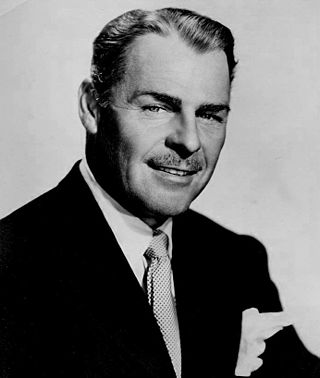
Waldo Brian Donlevy was an American actor, who was noted for playing dangerous and tough characters. Usually appearing in supporting roles, among his best-known films are Beau Geste (1939), The Great McGinty (1940) and Wake Island (1942). For his role as the sadistic Sergeant Markoff in Beau Geste, he was nominated for the Academy Award for Best Supporting Actor.

Torchy Blane is a fictional female reporter, the main character of nine films produced by Warner Bros. between 1937 and 1939. The Torchy Blane series, which blend mystery, action, adventure and comedy, were popular second features.
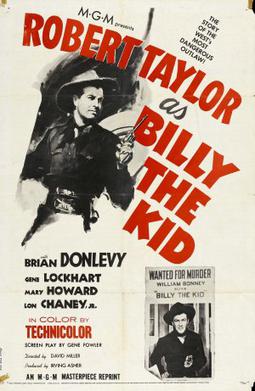
Billy the Kid is a 1941 American western film, a color remake of the 1930 film of the same name. The film features Robert Taylor as Billy and Brian Donlevy as a fictionalized version of Pat Garrett renamed "Jim Sherwood" in the film. Directed by David Miller and based on the book by Walter Noble Burns, the cast also included Gene Lockhart and Lon Chaney Jr. The film was not as well received as the 1930 original, Billy the Kid, which had starred Johnny Mack Brown and Wallace Beery and been shot in an experimental widescreen process.

Saratoga is a 1937 American romantic comedy film starring Clark Gable and Jean Harlow and directed by Jack Conway. The screenplay was written by Anita Loos. Lionel Barrymore, Frank Morgan, Walter Pidgeon, and Una Merkel appear as featured players; Hattie McDaniel and Margaret Hamilton appear in support. It was the sixth and final film collaboration of Gable and Harlow.
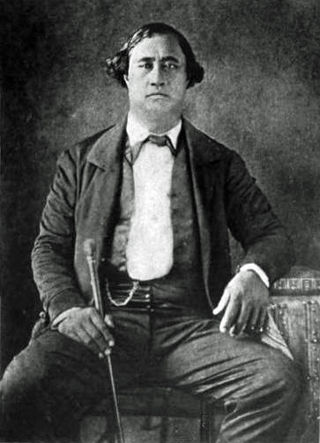
Abner Kuhoʻoheiheipahu Pākī was a Hawaiian high chief during the reign of King Kamehameha III, the father of Bernice Pauahi Bishop, founder of Kamehameha Schools.

ʻIolani Luahine, born Harriet Lanihau Makekau, was a native Hawaiian kumu hula, dancer, chanter and teacher, who was considered the high priestess of the ancient hula. The New York Times wrote that she was "regarded as Hawaii's last great exponent of the sacred hula ceremony," and the Honolulu Advertiser wrote: "In her ancient dances, she was the poet of the Hawaiian people." The ʻIolani Luahine Hula Festival was established in her memory, and awards a scholarship award each year to encourage a student to continue the study of hula.

A Gentleman After Dark is a 1942 crime/drama film starring Brian Donlevy and Miriam Hopkins.
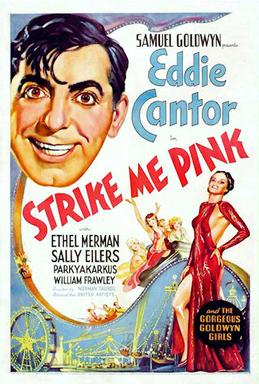
Strike Me Pink is a 1936 American musical comedy film directed by Norman Taurog, starring Eddie Cantor and Ethel Merman, and produced by Samuel Goldwyn.

Smart Blonde is a 1937 American mystery film directed by Frank McDonald. Starring Glenda Farrell as Torchy Blane, a fast-talking wisecracking female reporter, teaming up with her boyfriend detective Steve McBride, to solve the killing of an investor who just bought a popular local nightclub.
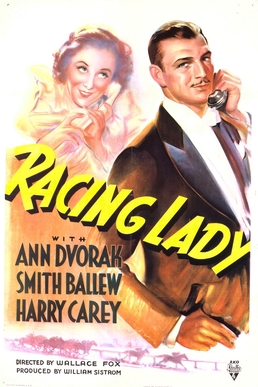
Racing Lady is a 1937 American drama film produced by RKO Radio Pictures, which premiered in New York City on January 12, 1937, and was released nationally on January 29. Directed by Wallace Fox, the screenplay was written by Dorothy Yost, Thomas Lennon, and Cortland Fitzsimmons, based on a story by Damon Runyon, which had been further expanded by J. Robert Bren and Norman Houston.

Mary Stevens, M.D. is a 1933 American pre-Code drama film starring Kay Francis, Lyle Talbot and Glenda Farrell. The film was directed by Lloyd Bacon and based on the story by Virginia Kellogg. It was released by Warner Bros. on July 22, 1933. A female doctor who has romantic troubles decides to have a baby without the benefit of marriage.

Hi, Nellie! is a 1934 American crime drama film directed by Mervyn LeRoy and starring Paul Muni and Glenda Farrell. A newspaper editor is demoted to writing an advice column for refusing to go along with the crowd in declaring a missing lawyer to be a thief.

The Law in Her Hands is a 1936 American drama film directed by William Clemens, written by George Bricker and Luci Ward and starring Margaret Lindsay and Glenda Farrell. It was released by Warner Bros. on May 16, 1936. The film's working title was Lawyer Woman.
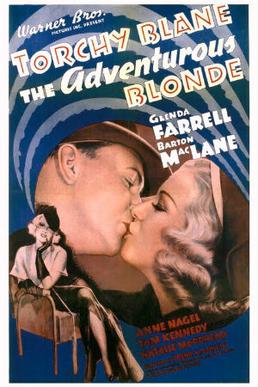
The Adventurous Blonde is a 1937 American comedy mystery film directed by Frank McDonald and starring Glenda Farrell, Barton MacLane and Anne Nagel. It was written by Robertson White and David Diamond. It was released on November 13, 1937.
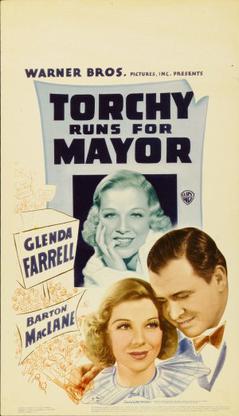
Torchy Runs for Mayor is a 1939 American drama-comedy film directed by Ray McCarey. It is the eighth film in the Torchy Blane film series by Warner Bros., and the last film starring Glenda Farrell and Barton MacLane as Torchy Blane and Steve McBride. It was released on May 13, 1939. The film is followed by Torchy Blane... Playing with Dynamite (1939).
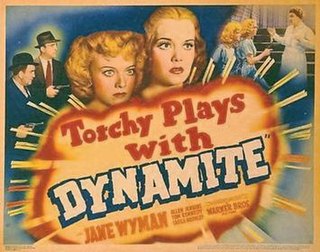
Torchy Blane... Playing with Dynamite is a 1939 American mystery film directed by Noel M. Smith, written by Earle Snell and Charles Belden, and starring Jane Wyman, Allen Jenkins, and Tom Kennedy. It was released on August 12, 1939.

Exposed is a 1938 American drama film starring Glenda Farrell, Otto Kruger and Herbert Mundin. The film was directed by Harold D. Schuster and is based on George R. Bilson's unpublished story "Candid Camera Girl". It was released by Universal Pictures on November 4, 1938. A magazine photo-newswoman tried to make amends after exposing a lawyer and complication ensues when they fall in love.



















